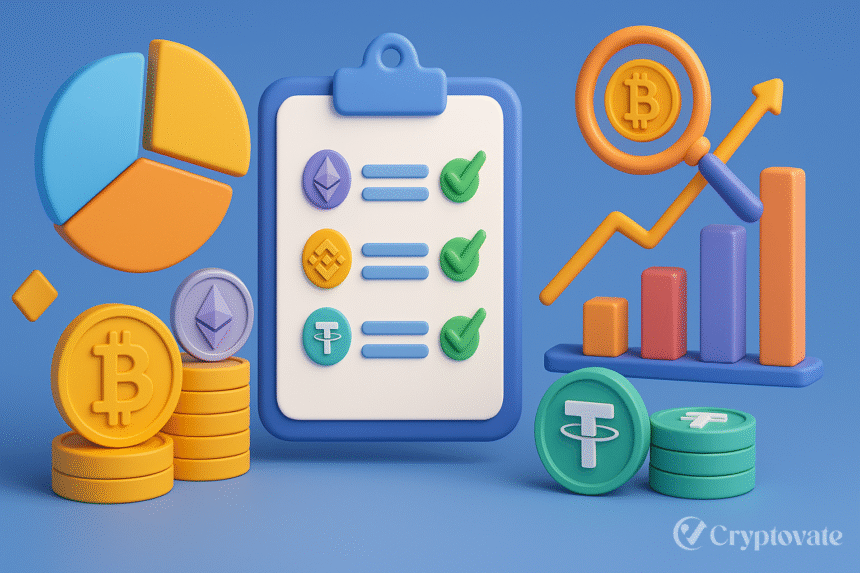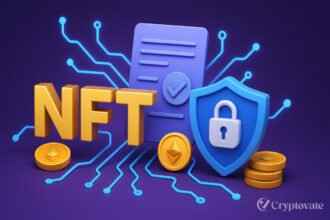– Ad –
| Getting your Trinity Audio player ready... |
Cryptocurrency markets are a rollercoaster of opportunities and risks. With 2025 bringing new innovations like decentralized finance (DeFi) advancements, layer-2 scaling solutions, and tokenized real-world assets, building a diversified crypto portfolio is essential for managing volatility and capturing growth. Diversification spreads risk, balances potential losses, and positions you to benefit from emerging trends. This guide provides actionable strategies and practical tips to diversify your crypto portfolio effectively, ensuring resilience in the ever-evolving digital asset landscape.
Why Diversification Is Crucial for Crypto Investors
The cryptocurrency market is widely recognized for its dramatic and unpredictable price fluctuations. A single asset’s value can skyrocket or plummet overnight due to market sentiment, regulatory changes, or technological shifts. Diversifying your portfolio reduces reliance on any one asset, cushioning the impact of downturns while exposing you to multiple growth avenues. In 2025, with institutional adoption growing and new blockchain use cases emerging, a diversified approach helps you stay ahead of the curve while mitigating risks.
Key Strategies for Diversifying Your Crypto Portfolio
1. Spread Investments Across Asset Types
A balanced portfolio includes a mix of cryptocurrency types, each serving a unique purpose:
- Established Coins: Bitcoin (BTC) and Ethereum (ETH) are the gold standards of crypto, offering relative stability and liquidity due to their market dominance. They form the backbone of most portfolios.
- Altcoins: Alternative coins like Solana (SOL), Cardano (ADA), or Polkadot (DOT) provide exposure to innovative blockchain ecosystems with high growth potential.
- Stablecoins: Assets like USDT or USDC, pegged to fiat currencies, act as a safe haven during market volatility, preserving capital for strategic buying opportunities.
- Utility Tokens: Tokens tied to specific platforms, such as Chainlink (LINK) for decentralized oracles or Polygon (MATIC) for Ethereum scaling, offer targeted exposure to niche sectors.
- Emerging Tokens: Allocate a small portion to new projects in DeFi, NFTs, or Web3, but exercise caution to avoid speculative traps.
Example Allocation: Consider 40% in BTC/ETH, 30% in altcoins, 20% in stablecoins, and 10% in emerging tokens. Adjust based on your risk tolerance and investment goals.
2. Diversify by Blockchain Use Case
Investing in projects with varied purposes reduces correlation risks, as different sectors perform differently under market conditions:
- Smart Contract Platforms: Ethereum, Solana, or Avalanche power decentralized applications (dApps), driving innovation in multiple industries.
- DeFi Protocols: Tokens like Aave or Uniswap support lending, borrowing, and trading, capitalizing on the growing DeFi market.
- Layer-2 Solutions: Polygon or Optimism enhances Ethereum’s scalability, offering cost-efficient transaction processing.
- Metaverse and NFTs: Projects like Decentraland (MANA) or Axie Infinity (AXS) tap into virtual worlds and digital collectibles, a booming sector in 2025.
- Privacy Coins: Monero (XMR) or Zcash (ZEC) cater to users prioritizing transaction anonymity.
Pro Tip: Investigate each project’s real-world adoption, developer activity, and community engagement to assess long-term viability.
3. Balance Across Market Caps
Mixing cryptocurrencies by market capitalization ensures a blend of stability and growth:
- Large-Cap Coins: Bitcoin and Ethereum, with market caps in the hundreds of billions, offer liquidity and lower volatility.
- Mid-Cap Coins: Assets like Binance Coin (BNB) or Avalanche (AVAX) balance growth potential with moderate risk.
- Small-Cap Coins: Emerging tokens with smaller market caps can deliver high returns but carry higher risks due to lower liquidity and unproven track records.
Guideline: Cap small-cap investments at 10-15% of your portfolio to avoid excessive exposure to volatility.
4. Consider Geographic and Regulatory Diversity
Regulatory landscapes vary globally, impacting project success. Diversifying across regions hedges against localized crackdowns:
- U.S.-Based Projects: Tokens backed by established platforms or companies in crypto-friendly jurisdictions.
- Asia-Pacific Projects: VeChain (VET) or Cosmos (ATOM) benefit from strong regional adoption in supply chain and interoperability.
- Europe-Based Projects: Polkadot or Tezos (XTZ) leverage Europe’s progressive stance on blockchain innovation.
Stay Informed: Track global regulatory updates to anticipate risks to specific projects or regions.
5. Implement Dollar-Cost Averaging (DCA)
Rather than investing a lump sum, use DCA to spread purchases over time. This strategy minimizes the risk of buying at peak prices and allows you to accumulate assets during market dips.
How to Apply: Set a fixed monthly investment budget and automate purchases on trusted exchanges. This disciplined approach smooths out market volatility.
Also Read: How to Read Crypto Charts: Technical Analysis for Beginners in 2025
Practical Tips for Effective Diversification in 2025
1. Conduct Thorough Research
- Use platforms like CoinMarketCap or CoinGecko to analyze market trends, trading volumes, and project fundamentals.
- Review project whitepapers, team credentials, and community activity to gauge legitimacy.
- Stay updated on industry developments through reputable crypto forums and analyst insights.
2. Prioritize Risk Management
- Commit only the funds you’re prepared to lose, given that cryptocurrency continues to be a highly speculative investment type.
- Set stop-loss orders on exchanges to limit potential losses during sudden market drops.
- Rebalance your portfolio every quarter to maintain your target allocation and adapt to market shifts.
3. Secure Your Assets
- Store significant holdings in hardware wallets like Ledger or Trezor for maximum security.
- Use exchanges with robust security measures for active trading.
- Activate two-factor authentication (2FA) and employ robust, distinct passwords for every account.
4. Stay Ahead of Market Trends
- Monitor emerging trends like tokenized real-world assets, AI-blockchain integration, and central bank digital currencies (CBDCs).
- Follow industry leaders and project updates for insights into partnerships, protocol upgrades, or market sentiment.
5. Avoid Over-Diversification
Managing an excessive number of assets may reduce profits and make portfolio oversight more challenging. Focus on 8-12 high-quality projects that align with your investment thesis.
Common Mistakes to Avoid
- Chasing Hype: Avoid investing in tokens driven purely by social media excitement or short-term pumps.
- Ignoring Fees: High transaction costs on networks like Ethereum can eat into profits. Explore low-cost alternatives like Solana or layer-2 solutions.
- Neglecting Security: Failing to secure private keys or using unverified platforms risks total loss of funds.
- Emotional Decisions: Stick to your strategy and avoid panic-selling during market corrections or buying during euphoric rallies.
Conclusion
Diversifying your crypto portfolio in 2025 is a strategic approach to navigating the volatile yet opportunity-rich cryptocurrency market. By spreading investments across asset types, blockchain use cases, market caps, and regions, you can mitigate risks while positioning for growth. Combine this with diligent research, disciplined risk management, and secure storage practices to build a robust portfolio. Stay adaptable, monitor market trends, and avoid common pitfalls to maximize your success in the dynamic world of crypto.
FAQs
How much should I allocate to cryptocurrencies in 2025?
Your cryptocurrency allocation should align with your financial objectives and willingness to take risks. A general guideline suggests dedicating 5-10% of your total investment portfolio to crypto, allowing you to handle potential losses while safeguarding your financial security.
Are stablecoins necessary for diversification?
Stablecoins aren’t mandatory but are highly recommended. They provide a low-risk buffer during market volatility, allowing you to preserve capital and seize buying opportunities during dips.
How do I choose reliable altcoins for my portfolio?
Focus on altcoins with strong fundamentals: a clear use case, active developer community, transparent team, and growing adoption. Check metrics like trading volume, market cap, and project updates to assess potential.
Should I diversify across multiple exchanges?
Using multiple reputable exchanges can reduce platform-specific risks, like hacks or outages. However, prioritize exchanges with strong security and never store large amounts on any single platform.

















